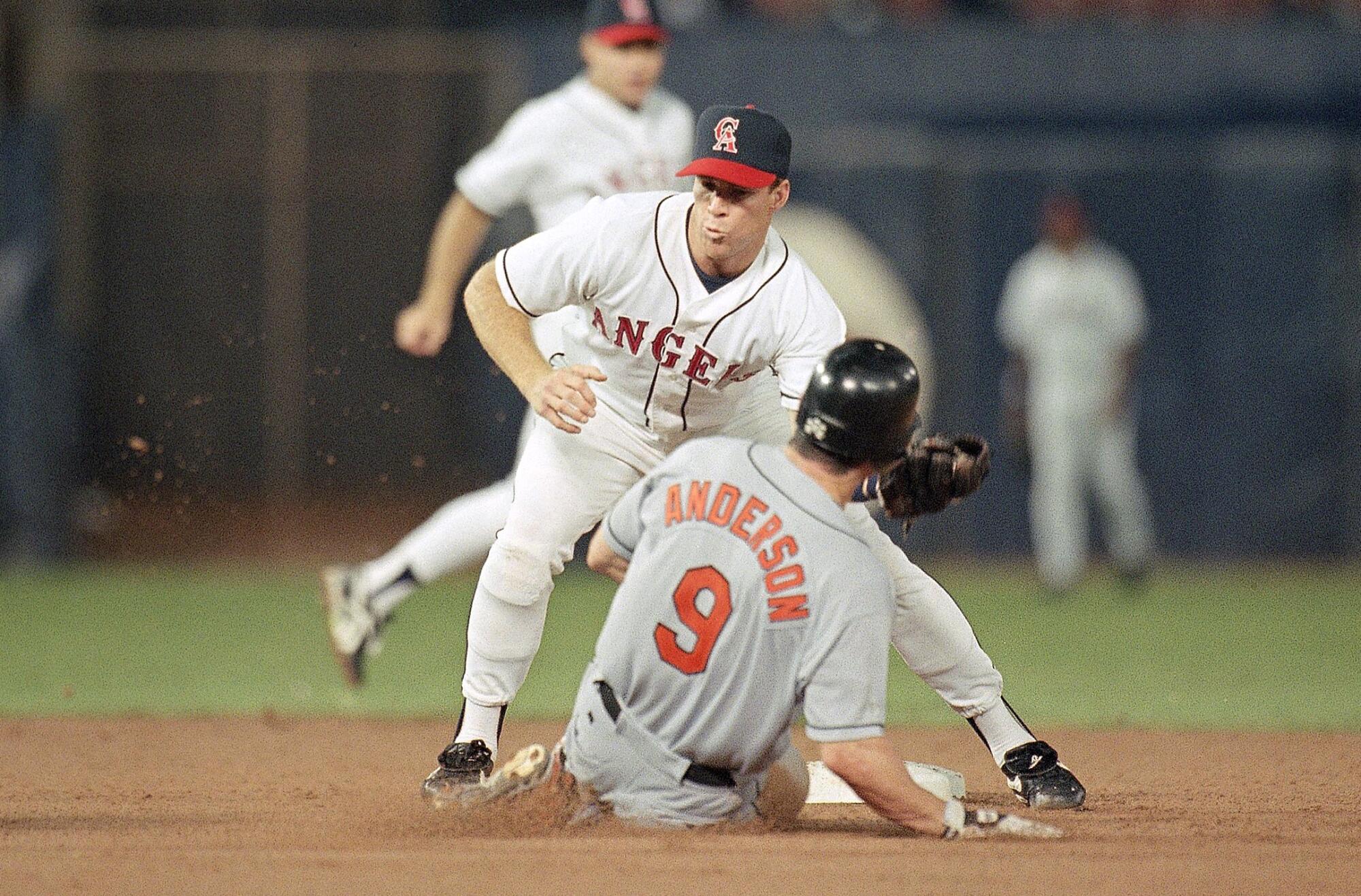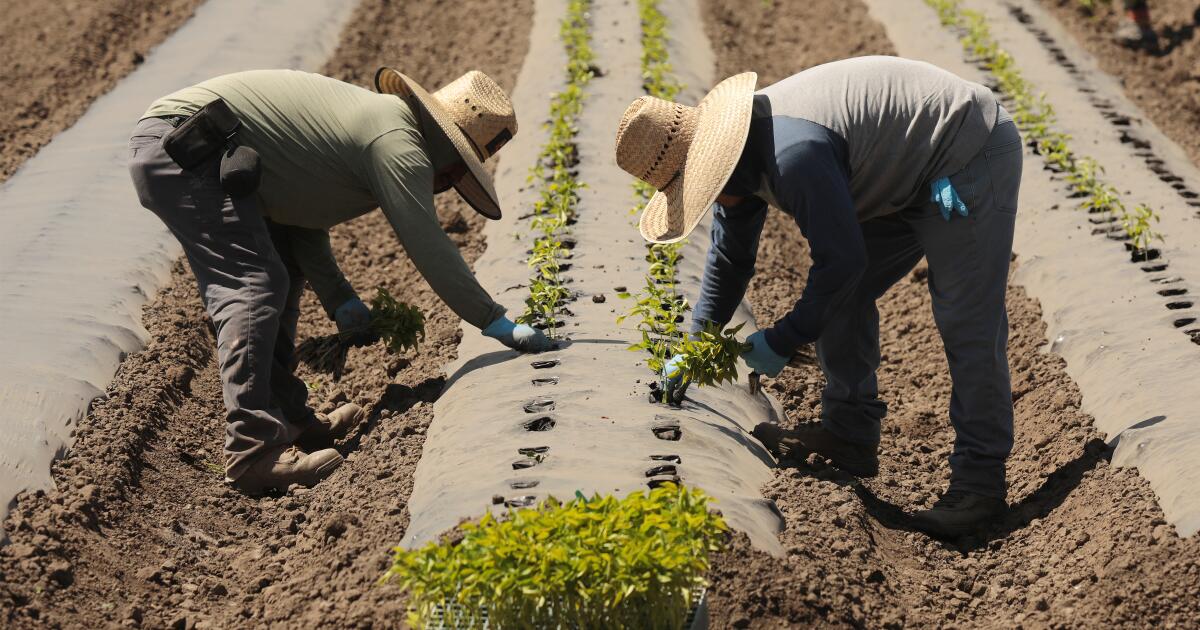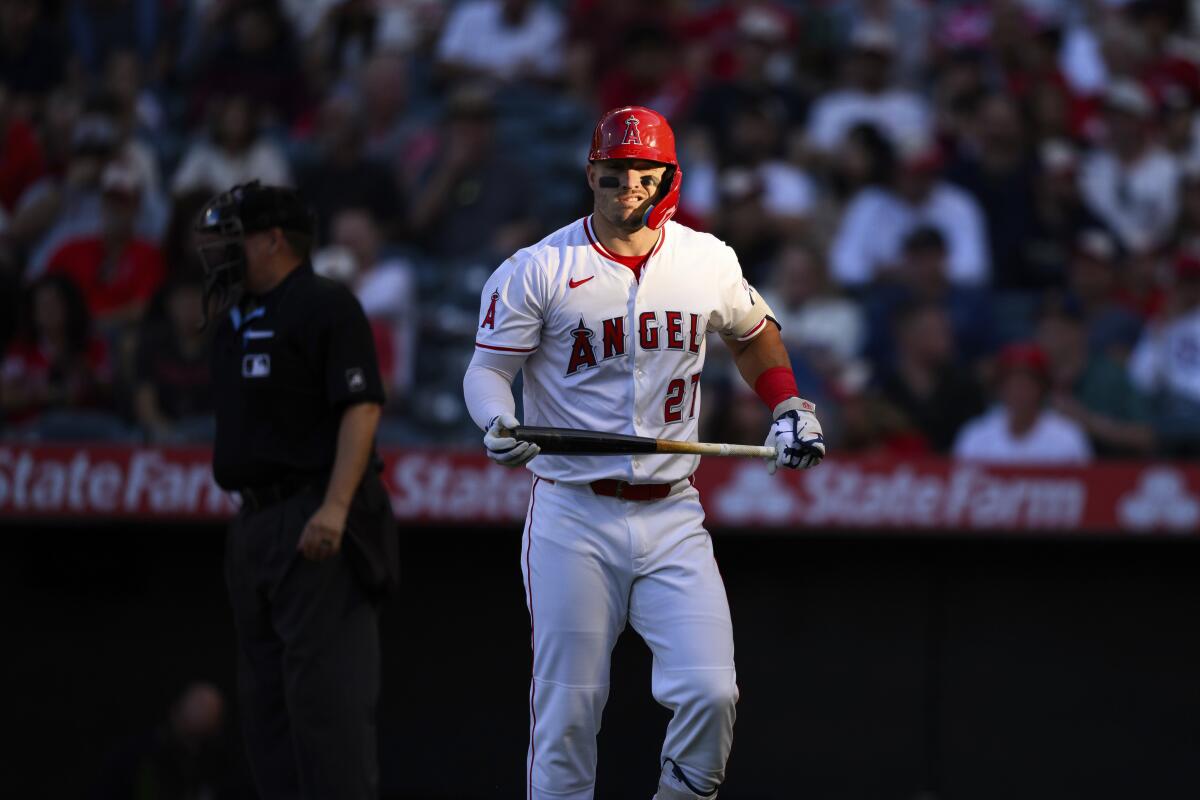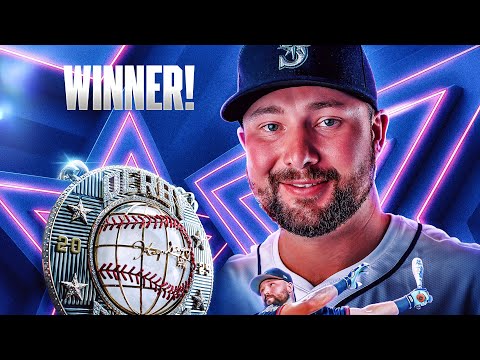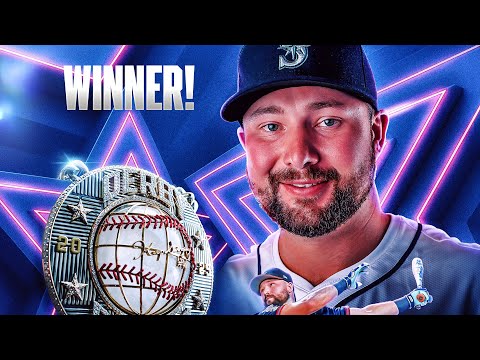Why 1995 Angels appreciated their place in history with Cal Ripken Jr.
Rex Hudler pestered plate umpire Larry Barnett for a game-used baseball, one with the orange laces and number “8” stamp to commemorate Baltimore Orioles shortstop Cal Ripken Jr. breaking Lou Gehrig’s consecutive games record in Camden Yards on Sept. 6, 1995, to no avail.
“He said, ‘No way, you’re gonna have to catch a third out or get a foul ball,’ ” said Hudler, the Kansas City Royals broadcaster who played second base for the Angels the night Ripken broke Gehrig’s record. “ ‘They’re all numbered and counted, and you can’t have one.’ ”
Hudler thought he had one when Orioles first baseman Rafael Palmeiro sent a flare into shallow right-center field with two outs in the bottom of the third inning, but Angels right fielder Tim Salmon called him off and made the catch.
“We’re running into the dugout, and I’m yelling at him, ‘What are you doing? That was my ball!’ ” Hudler said. “And King Fish had this big grin on his face, he kept running and said, ‘Haha Hud, you’ll get one.’ ”
When the game became official after the top of the fifth, and Ripken passed the Iron Man by playing in his 2,131st consecutive game, Hudler took the field and watched as Ripken took an iconic victory lap around the stadium, high-fiving fans, hugging teammates and delaying the game for 22 minutes, 15 seconds.
Ripken shook hands with every player in the Angels dugout — ”And when does that happen?” he said on a Hall-of-Fame podcast — and shared a warm embrace with Angels hitting coach and Hall-of-Famer Rod Carew.
Rex Hudler, above during a game against the Orioles in 1996, played three seasons for the Angels.
(Mark J. Terrill / Associated Press)
“I told him, ‘You’ve been great for all these years and very consistent in what you’ve done, and one day I’ll see you in the Hall of Fame,’ ” Carew said. “What a record that was, to be healthy for that long.”
Hudler was standing at his second-base spot when Ripken started his lap, but by the time Ripken returned to his dugout and was greeted by his family, Hudler was standing on the pitcher’s mound.
“I had been in this little dream for however long it took him to go around the stadium, wandering, watching him, following him, just enamored by what he was doing, and the next thing I know, I’m on the mound,” Hudler said. “I quietly turned and walked back to my position.”
When the game finally resumed, the Orioles loaded the bases with two outs, and up stepped Ripken, who hit a two-run homer off Angels pitcher Shawn Boskie in the fourth inning.
“Palmeiro was on second base and he said, ‘Hud, it’s only fitting, look who’s coming up, the baseball gods are here,’ ” Hudler said.
Only this time, the gods smiled on Hudler, who was actually drafted ahead of Ripken in 1978 — Hudler was a first-round pick of the New York Yankees and Ripken a second-round pick of the Orioles — but spent his entire 13-year big-league career as a utility man, while Ripken became a Hall-of-Famer.
“I went back to my position and said, ‘God, have him hit it to me, please,’ and Cal flared the first pitch over my head toward right-center,” Hudler said. “It was kind of a loopy liner, and I remember running, looking up at the ball, and it was in slow motion. I had never fielded a ball in my 21-year career that was in slow motion.
“As I’m running, I’m thinking, ‘That’s a six-carat diamond,’ it looked like a jewel, and I told myself, ‘Hud, you’re gonna break your neck for this. You can’t let this ball drop.’ My adrenaline and speed carried me under it, and when I caught it on the run, I shook my arm three times in disbelief. God answered my prayer on the field! It was unbelievable.”
Hudler sprinted off the field, ignoring teammates wanting to high-five him in the dugout for saving two runs, and into the visiting clubhouse, where he stashed the ball in his locker for safekeeping.
President Bill Clinton is handed an autographed ball by Baltimore Orioles shortstop Cal Ripken Jr., left, as they meet at the Orioles’ clubhouse at Camden Yards on Sept. 6, 1995, prior to the game with the Angels. Looking on at right are the president’s daughter, Chelsea Clinton, and Vice President Al Gore.
(Wilfredo Lee / Associated Press)
“I secured my precious gem,” Hudler said. “I have never caught a ball more valuable than that.”
Ripken, it turned out, was a gift that kept on giving. After the Angels’ 4-2 loss, Hudler was speaking to writers when an Orioles clubhouse attendant interrupted the scrum to present Hudler a shiny black Ripken bat signed with the message:
“To Hud, we go a long way back, you going ahead of me in the draft and all, but now, I feel like you feel when you strike out with the bases loaded: visibly shaken! All my best, Cal Ripken Jr., Sept. 6, 1995.”
Hudler was floored. He had asked Ripken for an autographed bat that May, when the Orioles were in Anaheim, and he was surprised one didn’t arrive when the Angels were in Baltimore in early June and the Orioles were in Anaheim again in late-August.
“I was speechless, I didn’t know what to say,” the always loquacious Hudler said. “Cal signed a bat for me that night. It was so classy. How could he think of me?”
The bat and the ball he caught to end the fifth inning — Hudler got the ball signed two years later — are featured in a special Cal Ripken shrine in the man-cave of Hudler’s Kansas City home.
And to think, this would not have been possible had a work stoppage not delayed the start of the 1995 season until late April and reduced the season to 144 games, placing the Angels, with no Orioles rainouts, in Baltimore when Ripken tied and broke Gehrig’s record.
Tim Salmon, above batting during the last game of the regular season in 1995, was part of an Angels team that last 29 of its last 43 games and lost a one-game playoff for the AL West to the Seattle Mariners.
(J.D. Cuban / Getty Images)
“I looked at the schedule in April, and a light went off in my brain that these would be historical games of great magnitude,” Hudler said. “I told our old traveling secretary, Frank Sims, that I needed three extra rooms in Baltimore for Sept. 4-6, and he goes, ‘Kid, whattaya mean? That’s so far away.’
“I kind of played it off. I didn’t want to tell him why. Then a week before we went to Baltimore, Frank asked me if I wanted to sell any of those rooms because there were no rooms available. I said, ‘Heck no!’ Three of my best friends who I grew up with in Fresno came out with their wives. Great memories for them, too.”
As cool as it was to be part of Ripken’s historic night, it was bittersweet for the Angels, who were in the middle of an epic collapse in which they lost 29 of their last 43 games and blew an 11-game American League West lead, joining the 1978 Red Sox, 1969 Cubs, 1964 Phillies and 1951 Brooklyn Dodgers in baseball infamy.
Their 5-3 win over the Orioles in the Sept. 4 series opener snapped a nine-game losing streak. The Angels lost nine straight again from Sept. 13-23 to fall two games behind the Seattle Mariners.
They rallied to win their last five regular-season games to force a one-game playoff for the division, but they were crushed by the Mariners and then-ace Randy Johnson 9-1 in that game.
“That was a painful swoon, and it cost us the division, but to be part of that Ripken celebration when your team was struggling so badly took the pain away,” Hudler said. “I was honored to play in those games, because I’m sure one of those lineup cards is in Cooperstown, and that’s the only way I ever got into the Hall of Fame.”
This story originally appeared in “Memories and Dreams,” the official magazine of the National Baseball Hall of Fame and Museum. For more stories like this about legendary heroes of the game, subscribe to “Memories and Dreams” by joining the Museum’s membership program at www.baseballhall.org/join.
